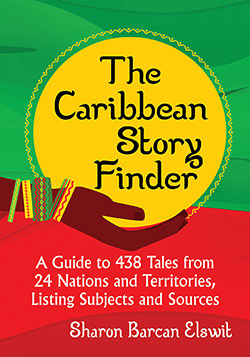 Researching each new folklore guide is a journey into different cultures. This one began at the Schomburg Center up at 135th Street and Malcolm X Boulevard in Harlem in NYC, where Langston Hughes’s ashes are buried and NYPL houses much of its African American collection.
Researching each new folklore guide is a journey into different cultures. This one began at the Schomburg Center up at 135th Street and Malcolm X Boulevard in Harlem in NYC, where Langston Hughes’s ashes are buried and NYPL houses much of its African American collection.
The journey became a mission. Caribbean tales reflect subversive resilience and humor which helped people survive during difficult times. And, they are being lost. Not only is it hard to track down folktales from the islands in print, but few of these tales from Caribbean heritage have been passed along to the descendants of islanders now living elsewhere.
The stories are filled with music. People sing what they speak. Many times a protagonist escapes by getting his opponent to dance without being able to stop or to become obliviously entranced by music he is playing. It was exciting to be able to include links to musical scores buried within books and The American Folklore Journal, many now digitized and accessible online.
Caribbean stories reflect the struggles and tricks of slaves and immigrants versus those who held the power. Often, this meant tangling with supernatural creatures, too. Often, this meant inventing a language which masters would not be able to understand. There are sources here for tales told in creole and patois. Click here for the full Table of Contents: http://www.mcfarlandbooks.com/contents-2.php?id=978-1-4766-6304-3
As in my Latin American Story Finder, the folktales reflect a melding of cultures. Only here, almost all of the people who told those stories were newcomers to the islands. Spanish, Dutch, British, Portuguese, and French colonialism destroyed most of the indigenous populations. Slaves were imported from West Africa to work on the plantations. Indentured workers from India arrived, hoping for a better life.
Their stories, which are memorably rich and challenging, provide new perspectives for discussing history and what makes a hero. Here, you will find a way to canny Jamaican Anansi who is always looking for food in the starving time; to Compere Lapin of Trinidad who goes to ask God for more sense and ends up with longer ears; to resourceful Tipingee of Haiti, who outwits the dangerous creature who would eat her; to the Ibelle twins who cross the devil who has destroyed all paths on Cuba; and to the tiny Puerto Rican coquí frog, who helps a jailed slave escape; and more….
